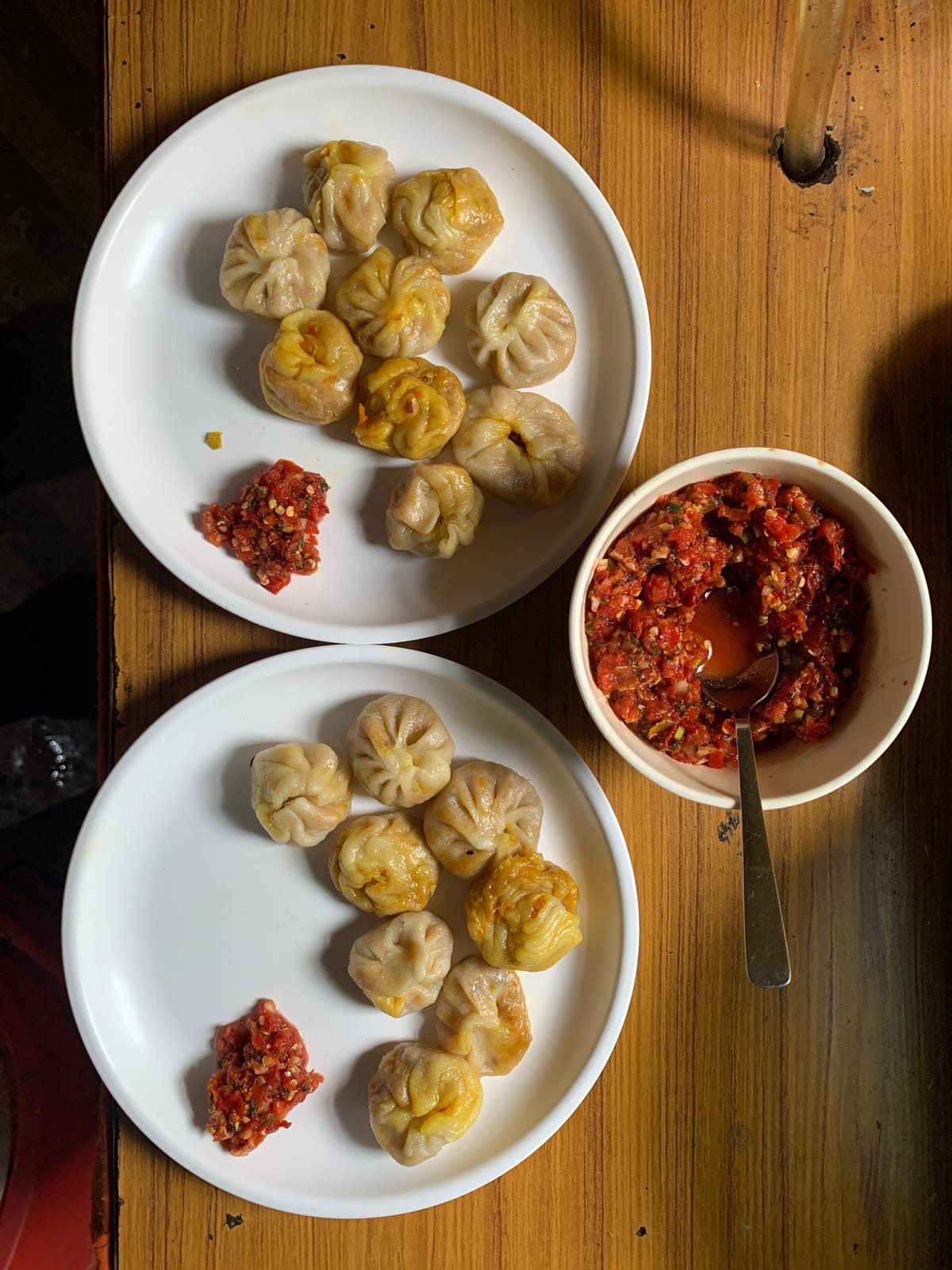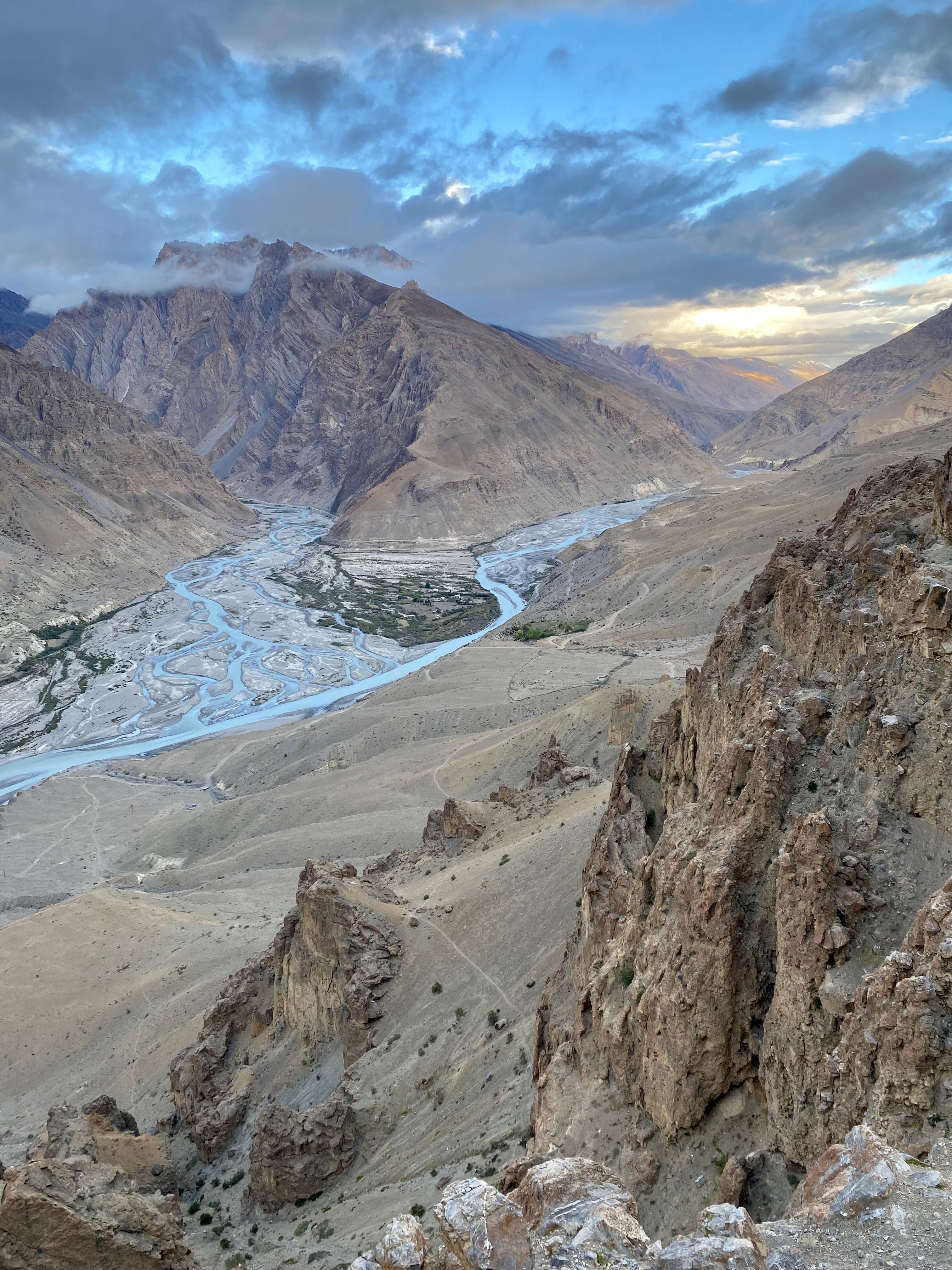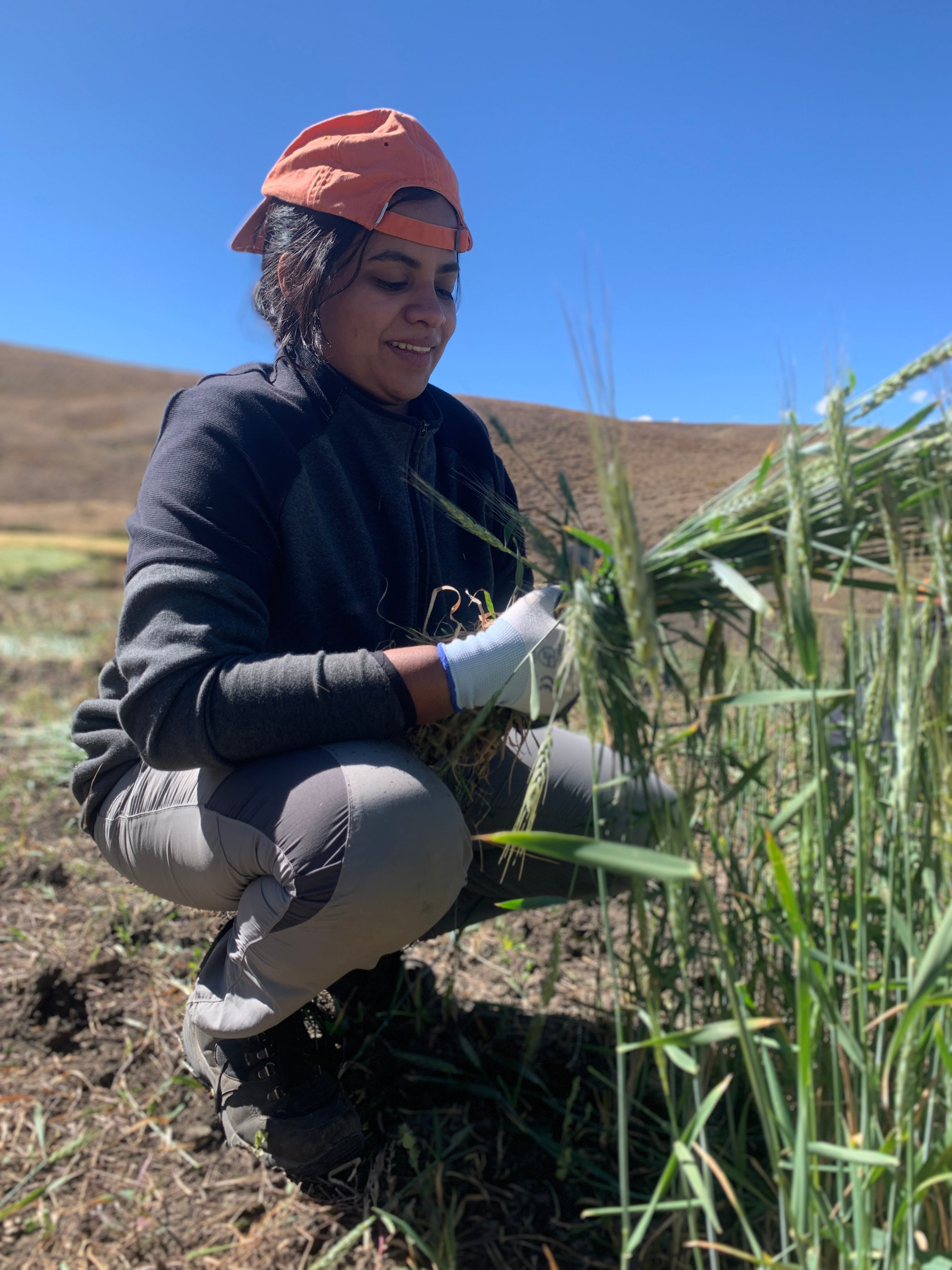The spiritual journey of food in a remote mountain village
A.k.a, the subtle art of simple cooking

It’s 5.30am. The sun seems to have hit snooze, and it’s about one degree Celsius outside.
I reluctantly climb out from under three thick blankets, chattering as I slip on another layer of clothing, grope in the dark for my shoes, step out of my room, climb down a ladder that leads into my host’s home, and make my way to the toilet. All the while, I’m thinking, let’s quickly get this done with and crawl back into the warmth of my blanket.
The light is on at the end of the corridor, and as I walk towards it, the glorious smell of freshly-baked bread hits me. My host, Tsering - wearing a peach salwar kameez and a light sweater - is smiling at me, her hands deftly rolling the bread. “Did you sleep well, shall I make some tea?”
This is in Komic, the highest village of the Spiti Valley in Himachal Pradesh, and one of the highest villages in the world, at an altitude of 15,500ft. One would imagine the cold and sheer harshness of living conditions would make Komic’s residents a little laidback, but they seem to be in competition with nature. Later that morning, Tsering served us Tiri - that wonderful bread smell I woke up to. A dough made with wheat flour, water, and a bit of yeast, left to ferment overnight. Rolled into perfect circles, cooked on raw flame, and served hot, it’s comfort food alright.
And so simple to make - mirroring the hardworking, happy people we encountered at every hamlet. The original minimalists.
The middle land

Spiti, or Piti, is the local word to describe what is literally the middle land between India and Tibet. The Spiti Valley is a high mountain desert in the north-eastern part of Himachal Pradesh.
To its south, west and north lie Kinnaur, Kulu and Ladakh, and in the east, Spiti shares a sensitive geo-political border with the Ngari Prefecture of the Tibet Autonomous Region (TAR).
Modern scholarship has often overlooked the long and meandering history of this remote Buddhist valley, but in its sparsely recorded history, there is evidence the region was incorporated into the expanding Tibetan Empire in the seventh and eighth centuries. The people of Spiti speak a tonal Tibetan dialect related to the Western Tibetan group.
Much of Spiti’s documentation began after the British annexed the region in 1846, appointed officials to exercise control over their new districts. From the 1840s until the 1920s, assistant commissioners stationed in the valley of Kulu recorded several aspects of Spitian society.
Five years ago, I visited Spiti as a trekker, walking from village to village and staying overnight at homestays. At the time, like any first-time visitor to this arid, desert Himalayan region, I was so taken aback by the landscape, culture, and other-worldness of Spiti to notice the more subtle ways of everyday life.
And so, I traveled there again - this time, to immerse myself in the local way of life, living and doing things Spitians do. I learned that food is a family heirloom, rooted so deeply in Spiti’s culture that one mouthful takes you on a trip both historical and cultural.
The subtle art of simple cooking
Food in Spiti is simple, but I’ve come to realize that’s what makes cooking and eating it a spiritual journey. The food is also faithfully seasonal, with locals taking pride in cooking with what is avaialable.
Food is also not assigned to one member of the family, or any one gender. Everybody cooks in Spiti. And the cooking chores revolve around other, more significant chores of the day, including harvesting, collecting cattle fodder for the harsh winter months, feeding, grooming and milking the cattle and entertaining visitors like me.
For instance, one morning in Komic, I went along with my host to her fields to help with the harvesting of the barley crop. My guide Ang Chuk, a local resident and an old friend of my host’s, also came along. I headed back by noon, my city hands bruised by half a day’s agricultural work and with a pounding headache. My host stayed back in the fields. In the time that I took to recover from real hardwork, Ang Chuk had whipped up a tangy pulao for our lunch.

On another afternoon in Kaza, Spiti’s main town, a young man, Lobsang, taught me how to make momos. A few days later, during my stay at a nunnery, I learned that the nuns too had a rota system for kitchen duties.
The common thread though? Spitians are no-waste chefs - my daily meals included one pulse - usually locally grown, one vegetable - from the kitchen garden, and rice.
Momos, the food quintessentially associated with mountain lands, is actually a delicacy - still simple in its making.
Food is a way for the community to come together, Lobsang, my momo-teacher told me. As I struggled to make those delicate folds on a single momo, Lobsang had made his way through five, saying, “During our weddings, the entire village collects in the house of the bride and groom. We set up an assembly line of sorts, from 5-year-olds to grandmas. Some cut the vegetables, others knead the dough, one group cuts out and fills the dough with the veggies, and the last group folds them into shape.”
A changing Spiti
Social media feeds of mountain trips are usually incomplete without that photo of a bowl of maggi with the backdrop of lush hills. But, let me tell you why that’s doing such a disservice to the region’s local cuisine.
Along the route to Spiti, family-run dhabas in remote areas keep their stoves running through the day, preparing simple, hot meals. They also stock up on hundreds of packets of maggi to cater to travellers’ demand. Choosing their local meal over maggi will not only give you a taste of the place you’re travelling to, but also save the locals the trouble of properly discarding non-biodegradable waste in an already fragile ecosystem.
It will also help preserve local ways of cooking.
Fun fact: Apparently, coke - introduced to the region by tourists - has now grown to become a favourite drink not just among kids of the region but also among the Buddhist monks - it helps relieve gas, our guide, Ang Chuk told us, which is why monks drink coke when they trek from one monastery to another.
(This midweek post is brought to you by weeks of procastrination that made me postpone my Sunday dispatch. But you, dear reader, have kept me accountable!)